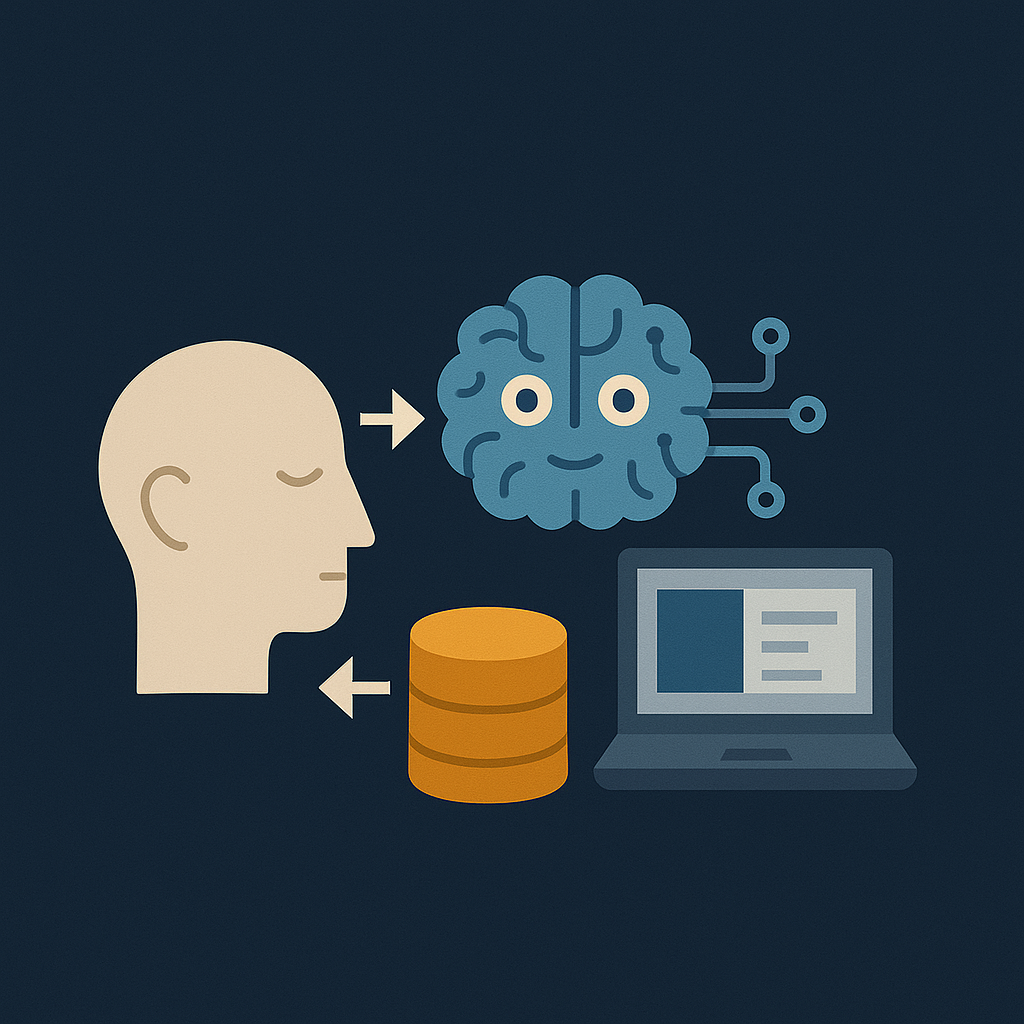Artem's Notes
- Tech & Engineering Insights
- Entrepreneurship & Product Building
- Personal Story & Philosophy
- Future & Industry Thinking
🧠 How I Approach Building AI into Everyday Software
→ TensorFlow, behavior prediction, automation — practical AI integration examples.

Artificial Intelligence used to feel like science fiction — but in 2025, it's simply smart software. From predictive features to automation and decision-making support, AI is now part of the everyday developer's toolkit. I’ve used it across industries: e-commerce, SaaS, fintech, and logistics. Below is how I think about integrating AI practically, what tech I rely on, and real examples from projects I’ve led.
🔧 Tools I Use: TensorFlow, Scikit-Learn, APIs, and More
The first decision when building AI into software is choosing the right tool for the job. I group tools into three categories:
- Model-building tools — like TensorFlow and PyTorch for neural networks, especially in image processing, NLP, and time-series forecasting.
- Traditional ML libraries — like Scikit-Learn for fast experimentation with regression, classification, clustering, etc.
- Pre-trained models and APIs — including OpenAI (for natural language tasks), Hugging Face (for embeddings or transformer-based models), and Google Vision/OCR APIs.
Example: For an online education startup, I used TensorFlow to classify handwritten math answers. Students uploaded snapshots, and the system could match them to solution steps using a CNN (Convolutional Neural Network). This enabled personalized feedback at scale.
🧠 Behavior Prediction: Powering Smart UX with Data
Predicting user behavior isn’t just about analytics — it’s about shaping experiences. I use behavior prediction to make products adaptive. This includes detecting drop-off points, estimating user intent, or tailoring content.
Example: In a subscription-based fitness platform, we tracked clickstreams, workout completion, and sleep logs. Using a decision tree ensemble, we predicted user burnout 3–5 days ahead and sent tailored nudges to prevent churn. This led to a 19% improvement in monthly retention.
Tools used: Scikit-Learn, Pandas, Flask for API endpoints, PostgreSQL for logging events.
⚙️ Automation in Practice: Real-World Time-Saving
One of the most immediate wins from AI is automation. You don’t need AGI — you need a workflow that saves time and cuts errors. I’ve built:
- Invoice classification tools for accounting software
- Email intent detectors that sort support tickets
- Smart QA tools for CMS platforms that flag outdated or inconsistent content
Example: A client in logistics had operators manually type tracking numbers from PDFs. I built a Tesseract OCR + NLP combo that extracted the values, validated format, and inserted them into the dashboard automatically. Operators now save 6+ hours weekly.
🧩 The Real Trick: Small, Focused AI
Too many teams try to “AI all the things.” My approach: choose one task. One prediction. One workflow. Test its value. Expand later.
A few high-leverage examples to start with:
- Lead scoring — using form data, traffic source, and early behavior to predict high-value leads.
- Smart defaults — use clustering to suggest user preferences or default settings based on behavior patterns.
- Conversational UI — use LLMs (like OpenAI GPT) to power chatbots that explain features or answer FAQs.
These are lightweight, quick to deploy, and offer immediate value without needing massive data pipelines or in-house AI research.
🚀 Final Thought: AI is Quietly Transformative
The best AI doesn’t shout “I’m AI!” — it simply makes your product feel smarter. Like autocomplete that knows what you mean. Like workflows that feel effortless. Like systems that seem one step ahead of the user.
Whether you’re building a dashboard, a marketplace, a CRM, or a game — AI is a tool that belongs in your stack. And often, it takes less time to implement than you think.
Posted on May 30, 2025
– Artem Solianyk
Founder of SKYC & IO SMART HUB | Full-Stack Engineer, Builder, Dreamer